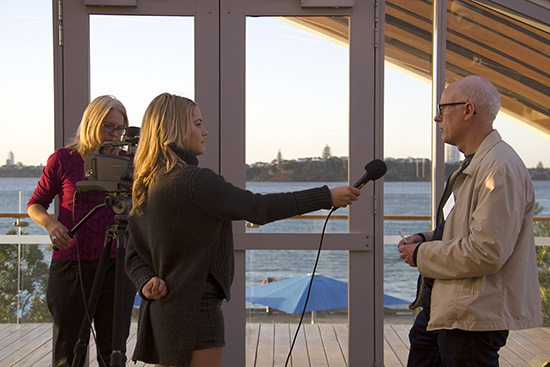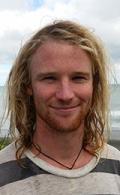Michael Neilson
AUCKLAND (Pacific Media Watch): A two-month Eyes of Fire student educational campaign with a microsite on the Rainbow Warrior experience has climaxed this weekend with a relaunch of the book and the author calling for justice for the Pacific victims of nuclear testing.
The relaunch of David Robie’s Eyes of Fire coincided on Friday with the 30th anniversary of the Rainbow Warrior bombing by French spies on July 10, 1985, at Marsden Wharf in Auckland Harbour.
First published in early 1986, the book tells of Greenpeace’s campaign with the Rainbow Warrior against nuclear testing in the South Pacific, the penultimate mission to Rongelap, its subsequent bombing and the political fallout that followed.
“This book refocuses the anniversary around the Rongelap mission and action now to confront climate change, which casts an even greater spectre over the planet than the Cold War nuclear threat,” said Professor Robie, director of the Pacific Media Centre at AUT University.
“It tells of the activism, and the humanitarian aspects, not just a spy drama being rehashed.”
Dr Robie said that even though France ended nuclear tests in 1996 and signed the Non-Proliferation Treaty (NPT), Pacific nations, including New Zealand, needed to press for justice for the nuclear victims.
Dr Robie was on board the Rainbow Warrior for 10 weeks during its final mission in 1985 through the South Pacific, protesting nuclear testing and helping evacuate residents of Rongelap affected by nuclear radiation.
Great project
Tony Murrow, publishing director of Little Island Press, which produced the book and created the Eyes of Fire microsite, said it was a great project to be involved in.
“Publishing of this calibre is hugely important. David’s book speaks of not just of a time in the past when activism involved danger, loss of life, and huge humanitarian acts,” he said.
“It also speaks about today, because those people who were in that crew are still striving to make the world a better place.”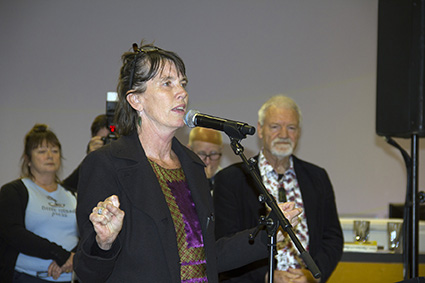 Greenpeace New Zealand executive director Bunny McDiarmid was a crew member on board the Rainbow Warrior during its final mission, and officially launched the book.
Greenpeace New Zealand executive director Bunny McDiarmid was a crew member on board the Rainbow Warrior during its final mission, and officially launched the book.
“David is one of the few people who was part of the Rongelap story, and us coming down from the Pacific to New Zealand, so he really can write about it from first hand.
“Thank you David for making sure the story of what happened to the Rongelap people and what happened to the Rainbow Warrior gets retold.”
When Dr Robie approached Little Island Press to discuss publishing a new edition, they decided to do something a little different.
Public good
“Tony [Murrow] came back and said, we want to do the new book, but also we want to produce a public good of value to the community, a digital microsite with interviews and stories to reflect on the past and look forward into the future, something that will inspire people.”
Dr Robie thanked Tony for his vision in producing a microsite.
In the weeks leading up to July 10, AUT University television and journalism students, AUT’s Pacific Media Centre, Little Island Press and members of Greenpeace, produced a series of interviews and stories about the Rainbow Warrior’s final mission on a microsite and current environmental campaigns for the microsite.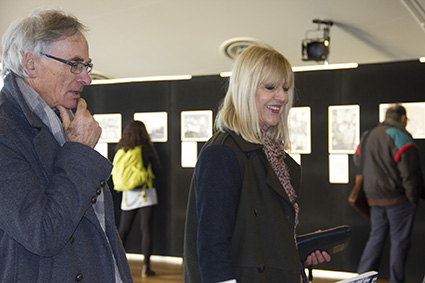 AUT’s dean of the Design and Creative Technologies faculty, Professor Desna Jury, joined crew members, environmental activists and social justice campaigners for the launch.
AUT’s dean of the Design and Creative Technologies faculty, Professor Desna Jury, joined crew members, environmental activists and social justice campaigners for the launch.
Dr Robie said: “It was an ideal educational opportunity involving 40 of our television and journalism students and Alistar Kata at our Pacific Media Watch project.
“It was a journalism project on an unprecedented scale for a journalism school in New Zealand - a living history.”
For Murrow, it was an ideal opportunity to tell the stories about the Rainbow Warrior’s final voyage, rather than focus just on the bombing, which he said often happened in mainstream coverage.
Telling complex stories
“The role of a publisher in the world today is not to make short sharp chops like advertising agencies and mainstream media often do, but to tell deep complex stories and to give them the time and care that they deserve.
“It’s been about telling those stories properly and what we feel we’ve done with this project is actually to come back and reclaim the story - just a bit - of the last voyage of the Rainbow Warrior.
“It wasn’t just about two bombings at Marsden Wharf, just a short distance from here, but it was also about the bombings in the Marshall Islands in the 1950s that left a legacy of nuclear radiation fallout, and the French nuclear testing that didn’t finish until the mid-1990s.
“For us it’s been a deeply rewarding series.”
Murrow said it was a great experience working not only with activists, but young people at AUT.
“We’ve had 40 students who have gone out and had a very similar experience to the one I had – a revelation about the background and continuity of activism in New Zealand for this period. And revelations about stories behind the bombings.”
McDiarmid said the microsite was a great educational project, especially for the students involved, telling stories not just about Rongelap and the bombing, but about the early days of the Rainbow Warrior.
Finding out history
“I love the fact that it went through all the young students that had to find out about some of their history, that’s really great.”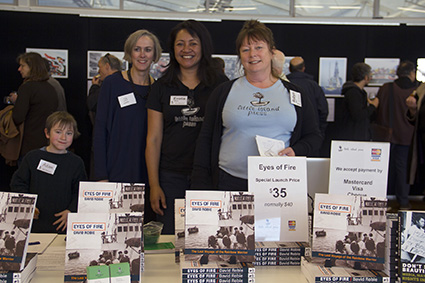 AUT television journalism student Senka Bosnyak said it had been a real learning experience.
AUT television journalism student Senka Bosnyak said it had been a real learning experience.
“I didn’t know anything about the Rainbow Warrior beforehand, so it was great learning all about it.”
Even though nuclear testing in the South Pacific officially ended in 1996, Dr Robie said there was much more to do to redress the damage it caused.
“We have relaxed far too much since the end of French nuclear testing on Moruroa.
“Just ending the tests isn’t enough, it is the unfinished business of the massive clean-up, and the health burden left by these 269 nuclear tests in the region [by all three powers who conducted tests in the Pacific], many of them toxic atmospheric tests.”
Dr Robie called on Pacific nations to have a united voice over the issue.
‘Renew pressure’
“Pacific nations should renew pressure on the nuclear powers for real justice in the region after almost seven decades of buckpassing and neglect for their shameful testing programmes.”
He cited the Marshall Islands government’s case over nuclear testing against the United States - which is due to have an appeal heard before a federal court tomorrow – and in the International Court of Justice as examples of Pacific pressure.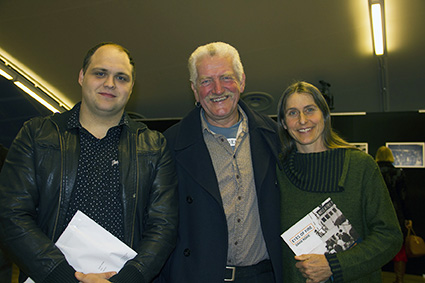 The Eyes of Fire book launch took place at The Cloud where Greenpeace is holding a photographic exhibition this weekend as part of its Rainbow Warrior 30th anniversary events.
The Eyes of Fire book launch took place at The Cloud where Greenpeace is holding a photographic exhibition this weekend as part of its Rainbow Warrior 30th anniversary events.
Greenpeace photographer Fernando Pereira was killed when French agents bombed the Rainbow Warrior in 1985.
The “Courage Works” exhibition displays 30 images of activism in Aotearoa, including apartheid-era Springbok rugby tours, the Vietnam War, the occupation of Bastion Point, nuclear testing in the Pacific, Māori land marches and deep sea oil drilling.
“We really didn’t want to just throw more reeds in the water come this anniversary, we really wanted to find something that really connected what we did 30 years ago and what we do today,” said McDiarmid.
“This is our history, some of the best stories of activism in New Zealand, and it belongs to all of us. Our way of saying let’s celebrate our activism.”
The exhibition, which is free and open to the public, features work from photographers, including Gil Hanley, John Miller – who have many pictures in Eyes of Fire - and Jos Wheeler, who also curated the show.
Other launch images on the PMC Facebook page
AUT media professor David Robie's full address at the book launch